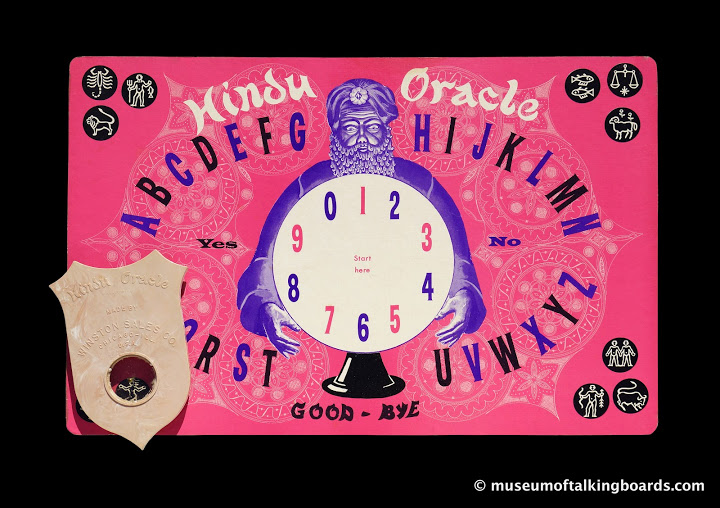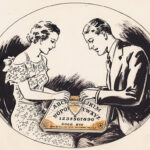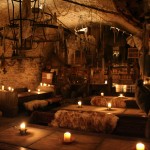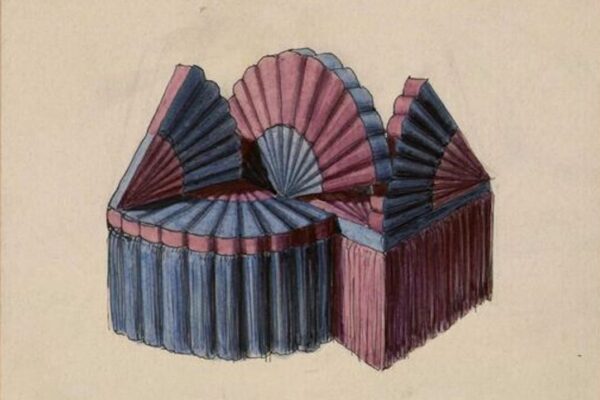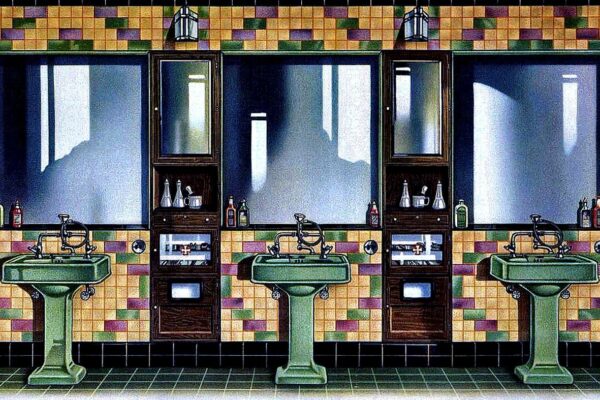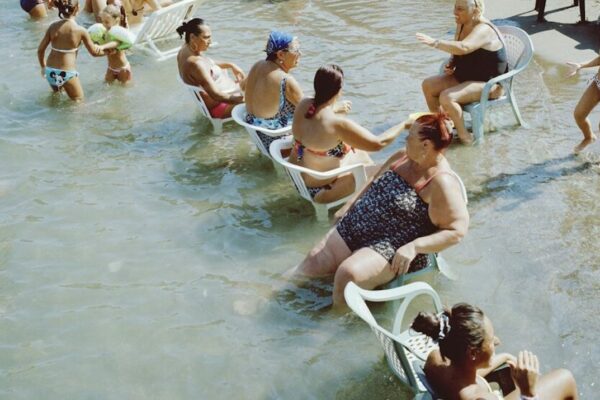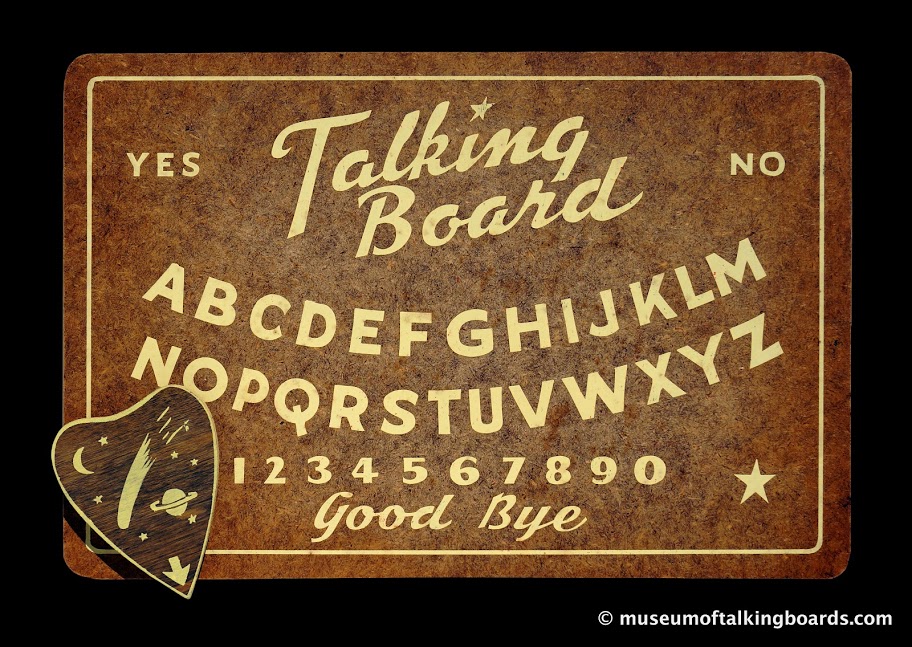
We all had a Ouija phase, didn’t we? Or at least most of us saw The Exorcist and know what can happen if you don’t say “Goodbye” to the spirit world before putting away the board. But did you know there are hundreds, maybe thousands of different talking boards out there? And not all talking boards are Ouija boards. Today in internet adventures, we’re taking a field trip to the Museum of Talking Boards, a fascinating virtual space dedicated to the forgotten art of the mysterious iconic board game.
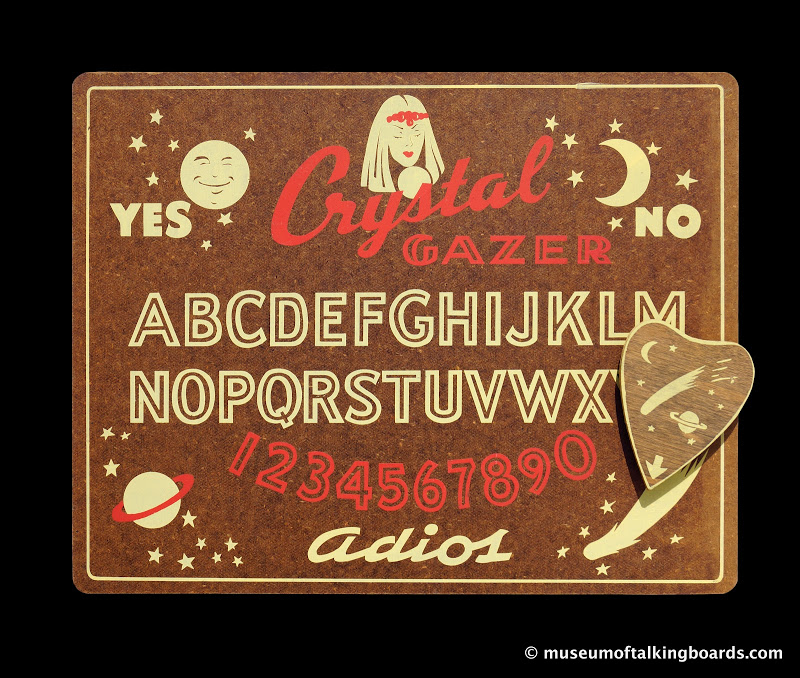
Crystal Gazer, 1940
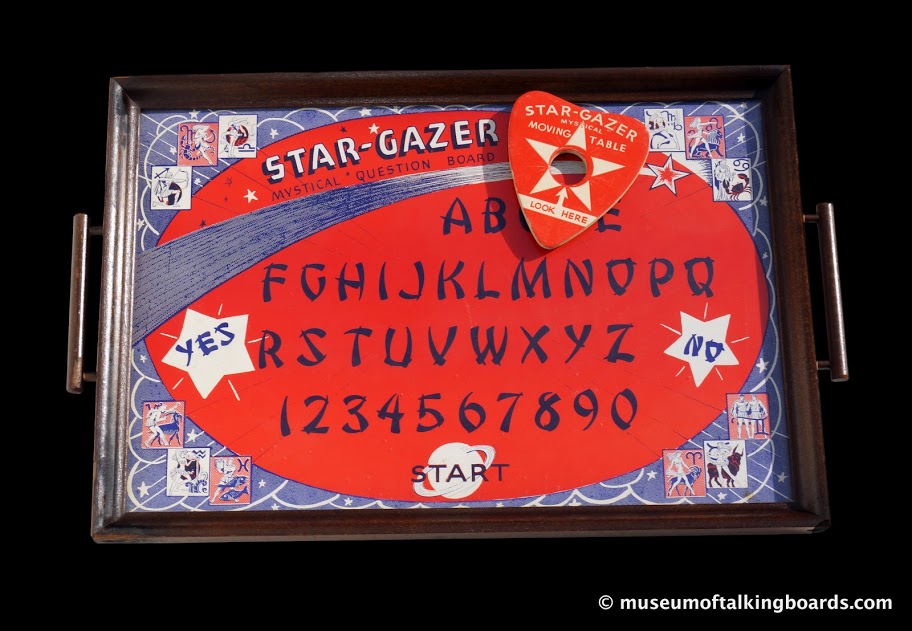
Star Gazer Mystical Question Board Tray-Alice Lee Manufactur
“Despite their popular appeal, most talking boards were used a couple of times, shelved, and eventually thrown away. This resulted in the tragic loss of a fascinating American art form,” explains the online museum, which documents and researches hundreds of historical and modern boards found in antique stores, flea markets, on eBay and at auction houses. The vintage design, typography and symbolism is as fascinating as the story behind the evolution.
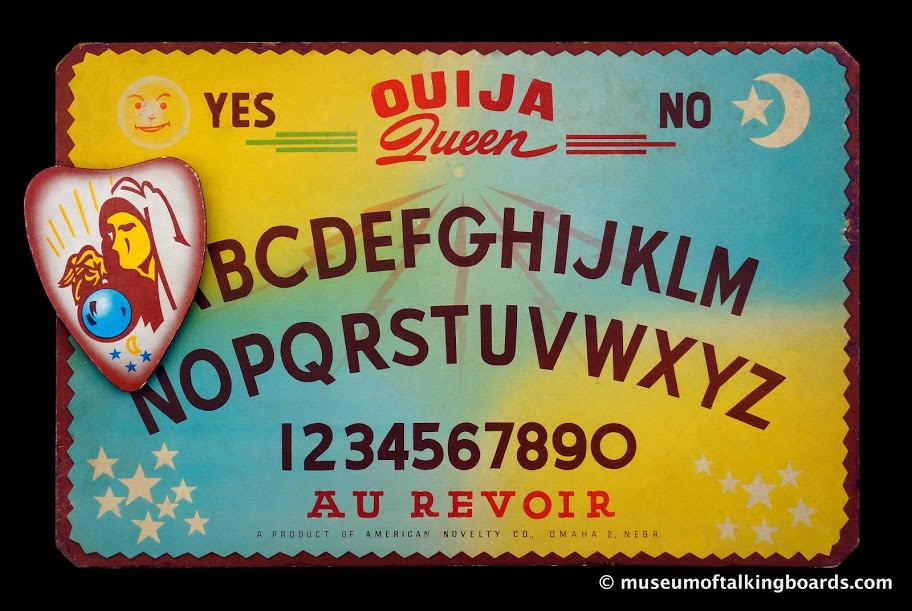
Ouija Queen, America
I’ll give you a brief whizz through the story, but there’s plenty more juicy information on the Museum of Talking Boards. The first Ouija mass-manufactured game as we know it, was invented in 1890 in response to the American spiritualism movement of mid 19th century America, when a wave of the middle and upper class population basically started trying to communicate with dead relatives and spirits in their spare time, usually through the help of a female mediums.
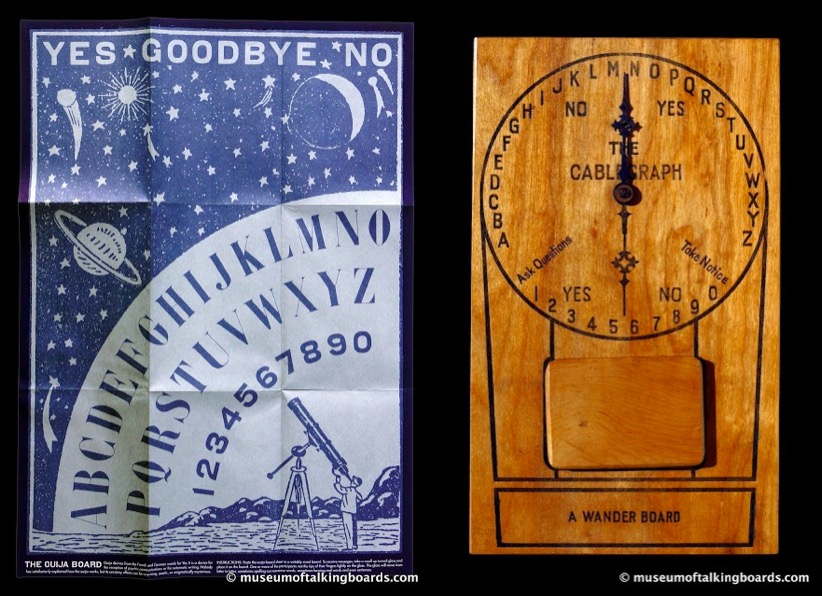
Left: Magic Box Ouija Board-Sham
Spiritual mediums, typically eccentric society outcasts (or the “crazy lady” who lives in the house at the end of the street) had their own makeshift variations of alphanumeric tables with rotating pointers that would later inspire the first commercial talking boards.
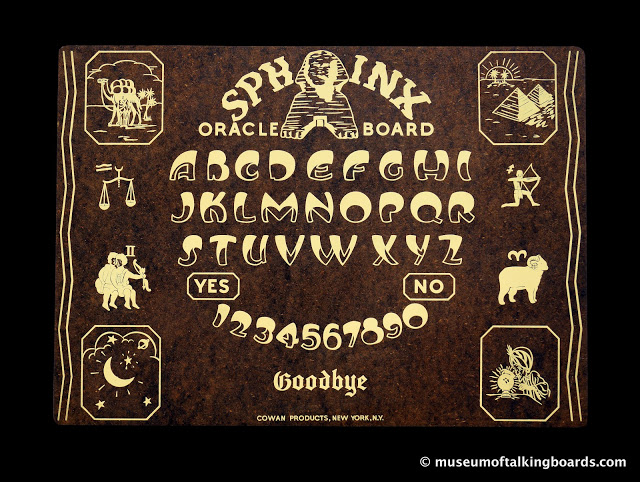
Sphinx Oracle Board-Cowa
As far as asking questions to the supernatural world, we can go even further back than that, as my favourite podcast Stuff you should Know points out, to 4th century BC, when a Greek scholar recorded the execution of two men who had practiced divination using a pendulum and disc with an alphabet to spell out words.
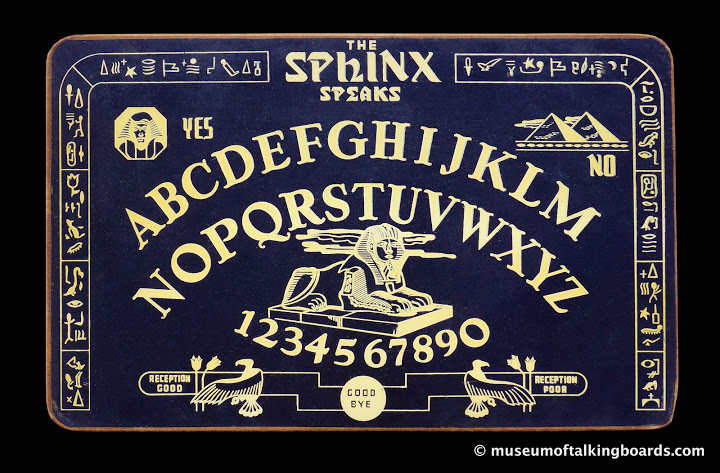
The Sphinx Speaks-Jer
The Ouija board brand even tried to market itself for many years as having originated from Egyptian antiquity and one of the patent owners claimed that when he asked the spirit world what he should call his talking board, it spelt out Ouija, which the spirit proceeded to tell him was ancient Egyptian for good luck.
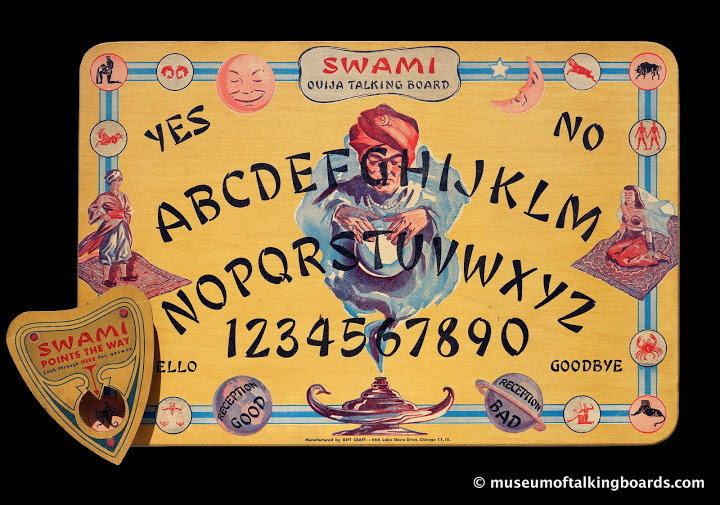
Swami Ouija Talking Board-Gift Craft, Chicago 11, IL c. 1944
Hindu Oracle-Win
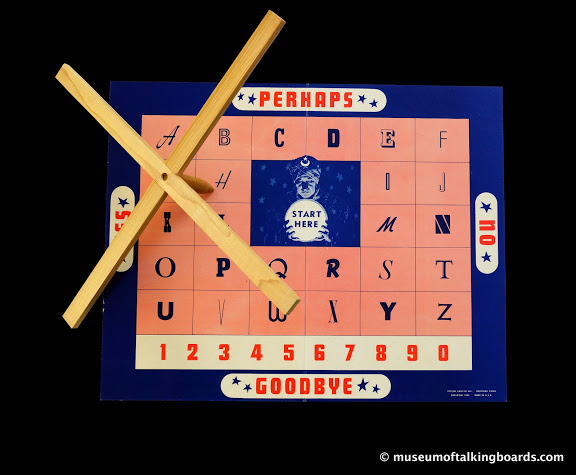
Magi Board-Psyc
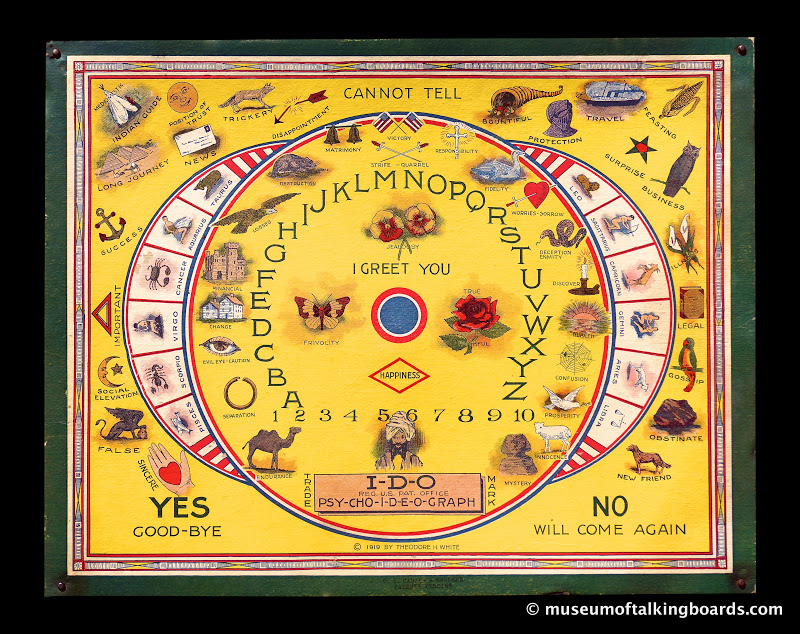
I-D-O PSY-CHO-I-D-E-O-GRAPH-Theodore H. White, Los Angeles, CA 1919
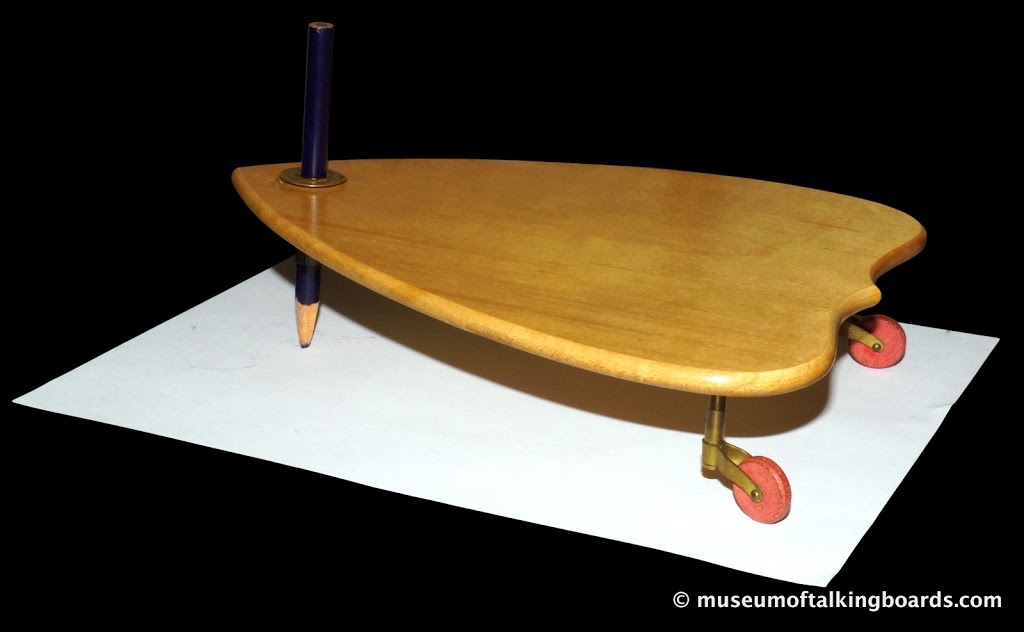
The Scientific Planchette
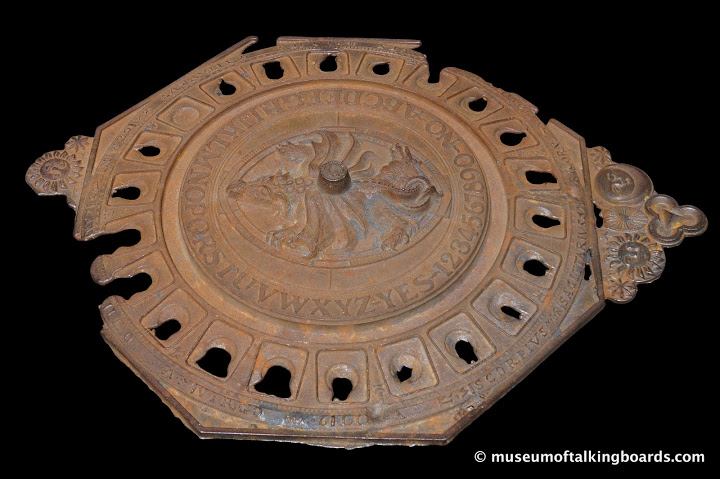
ka-bala-ca
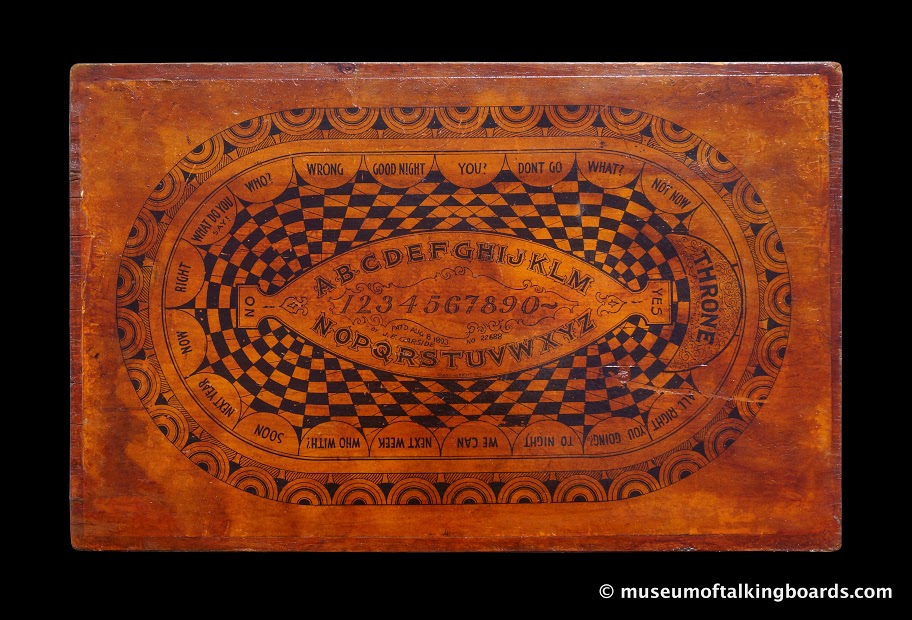
Throne Board-J.E. Garside, Peoria, IL 1893
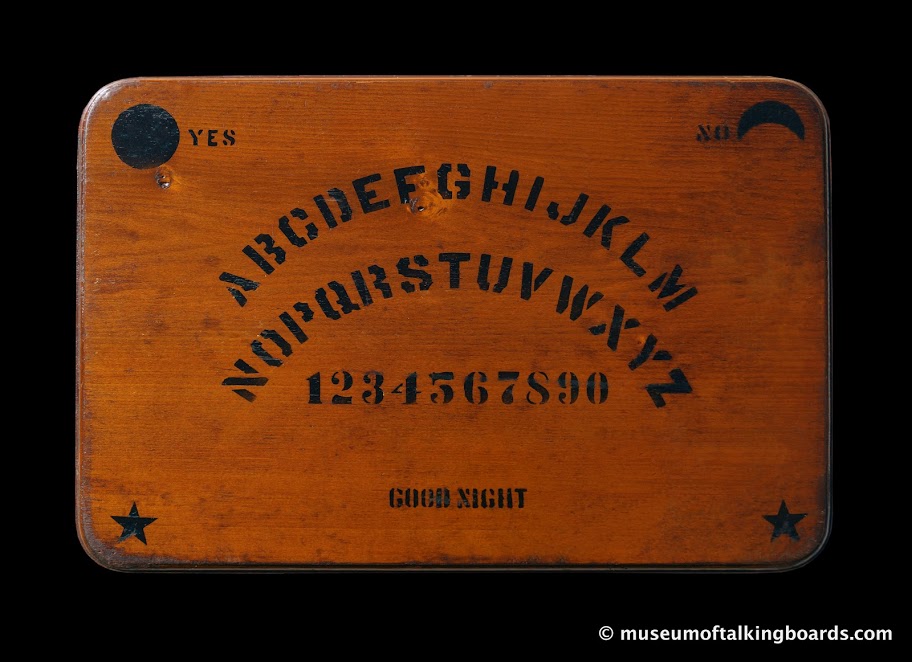
Bond-Kenna
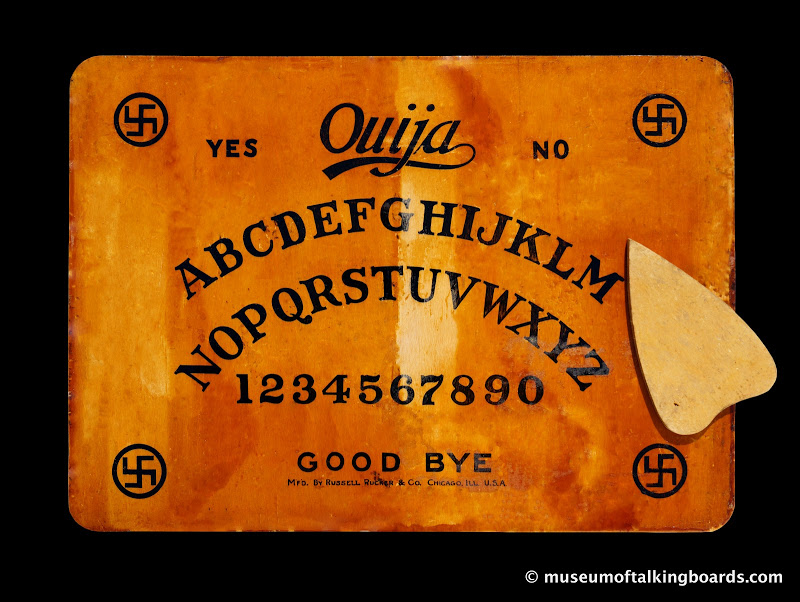
Ouija-Russ
A different theory is that the name comes from the French and German words for yes “Oui’ and “Ja”. The ownership of the Ouija brand changed hands several times over the years, and many of the earlier patent owners were keen to claim they were its inventor or originator. One of the earliest known patent holders of Ouija was Elijah Bond who later had the idea of putting swastikas on the boards (before its association with the Nazis).
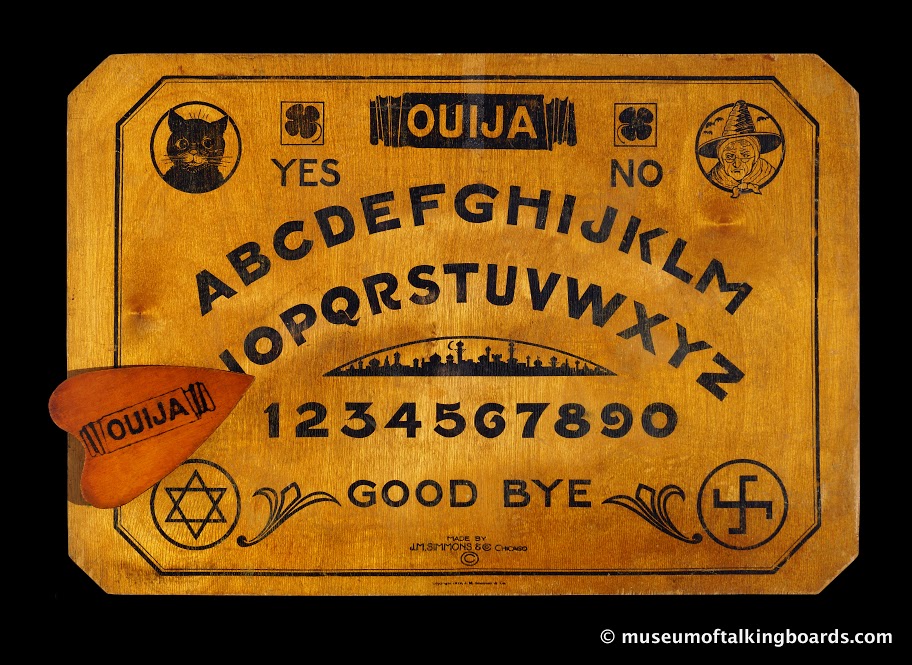
Ouija-J.M. Simmons, Chicago, IL c. 1920 – c. 1945
But it was William Fuld, a US customs inspector who was leased the rights to manufacture the Ouija board, who would become known as the father of the Ouija board. He sold millions of them, marketing them as a toy to children.
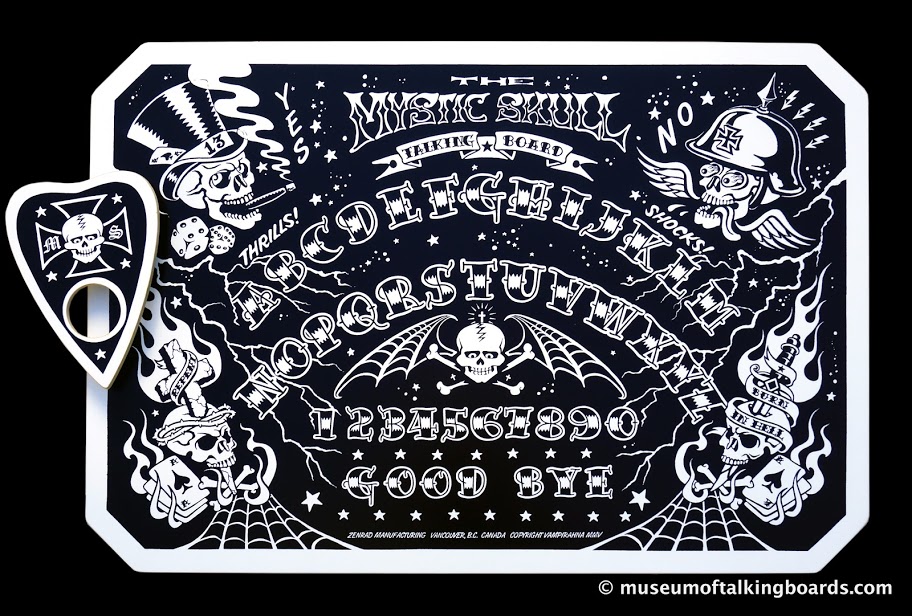
The Mystic Skull Talking Board-Vamp
He even built a factory according to what the board told him. Then in 1927, he fell off its roof and died. He was supervising the replacement of a flagpole when a support post he was holding gave way.
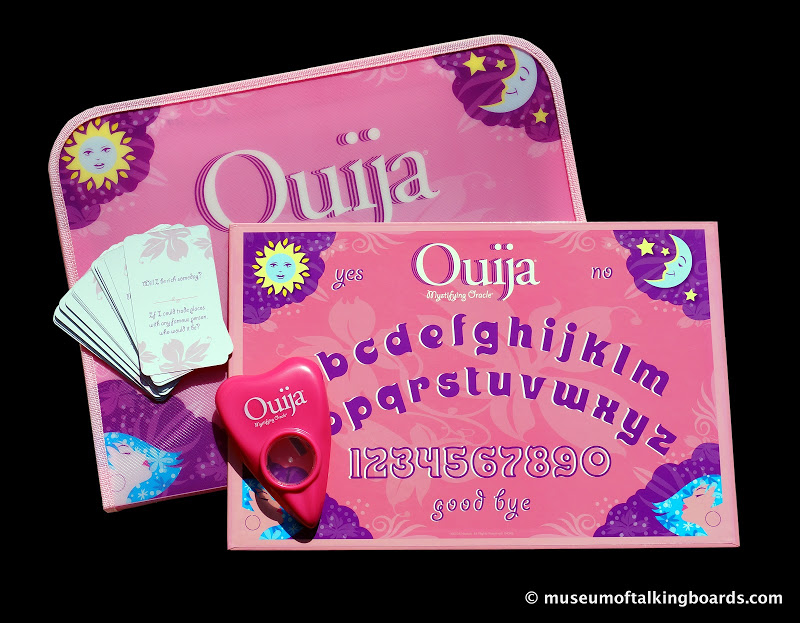
Ouija-Park
Fuld’s children took over until the 1960s when they retired and sold the business to Parker Brothers, which later became Hasbro and owns the game today.
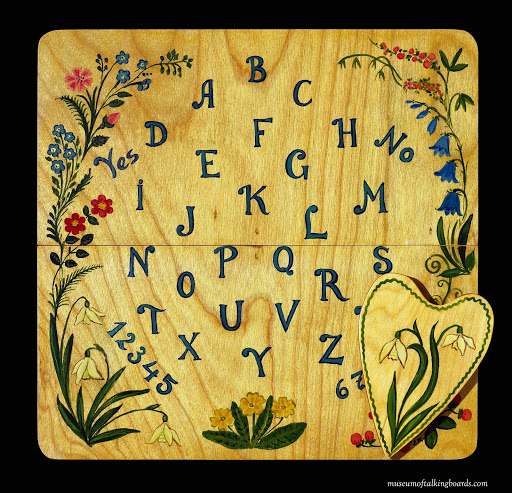
A homemade talking board (folding)-Elizabeth Klima 1998
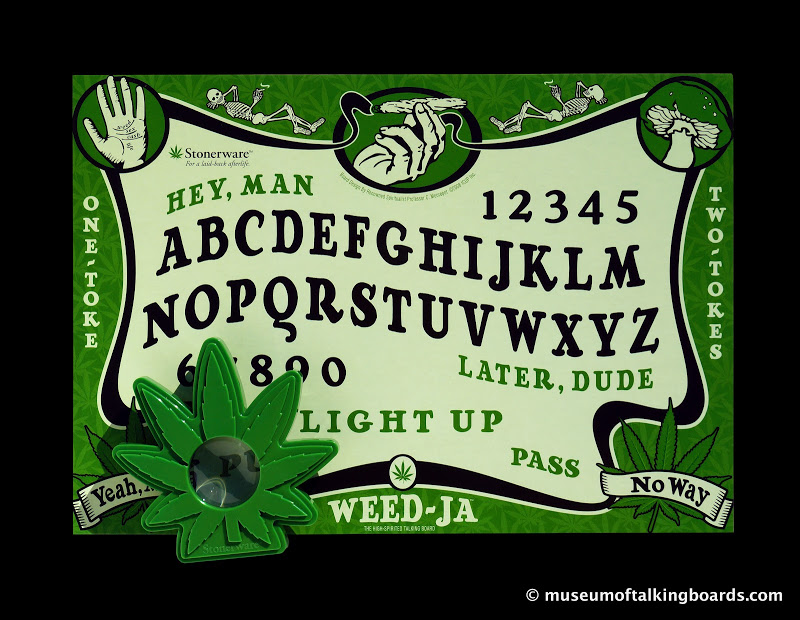
Weed Ja The High Spirited Talking board-Icup Inc., Croydon, PA 2010
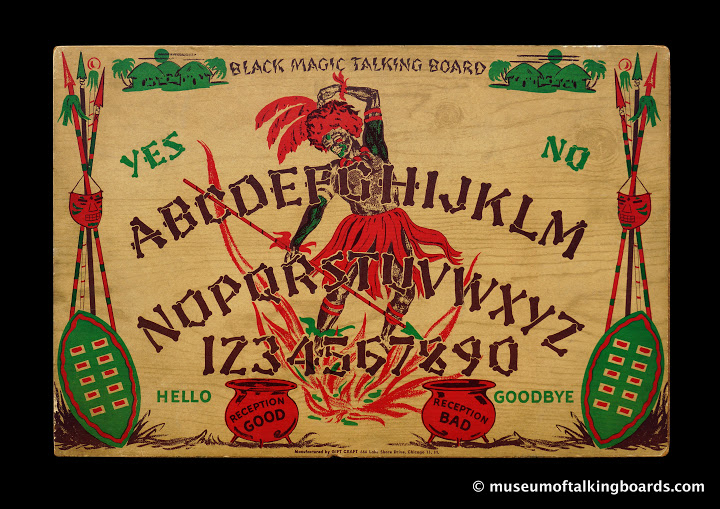
Black Magic Talking board-Gift Craft, Chicago 11, IL c. 1944
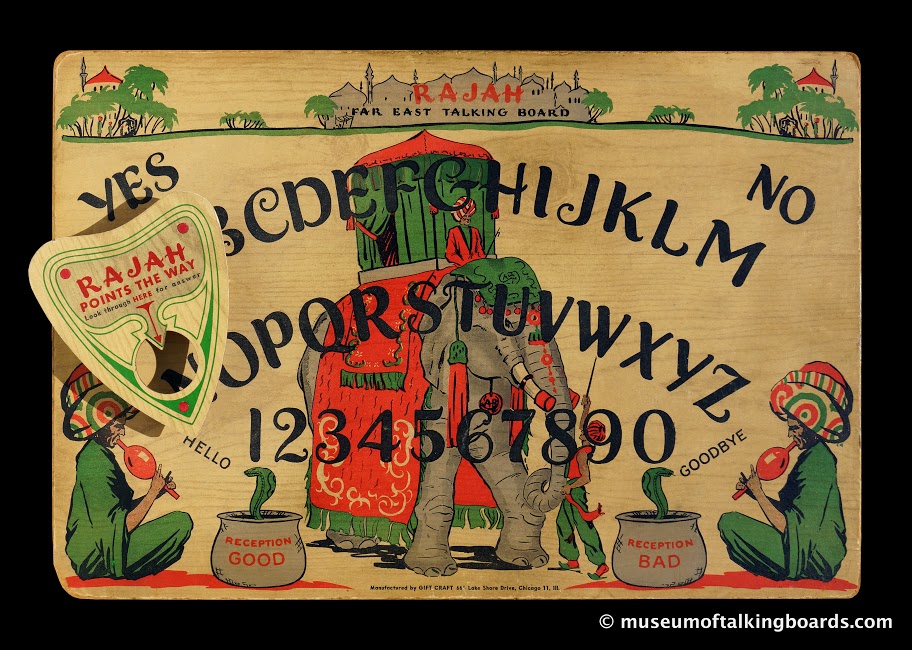
Rajah Far East Talking Board-Gift Craft, Chicago 11, IL c. 1944
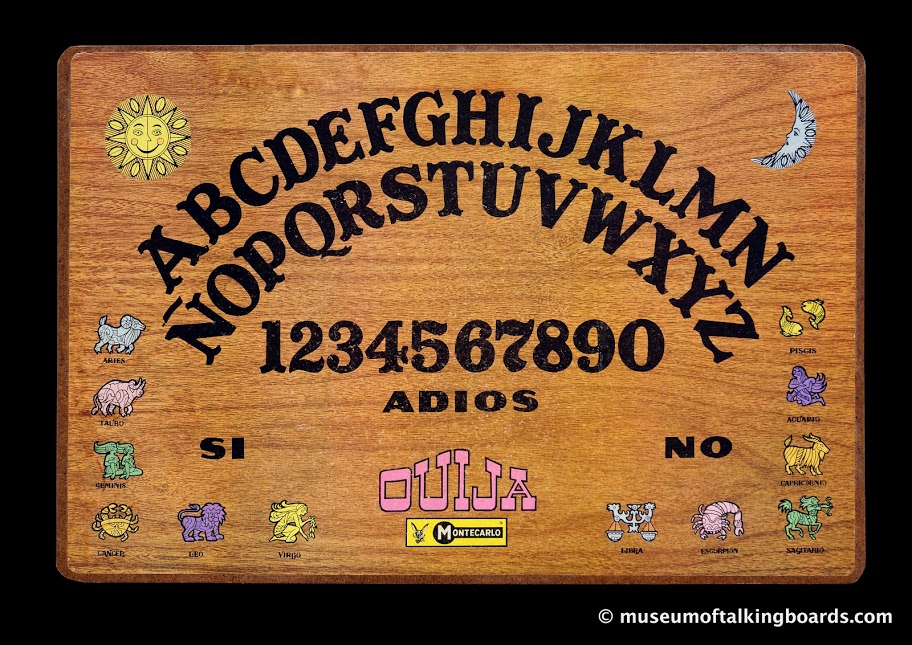
Ouija-Mont
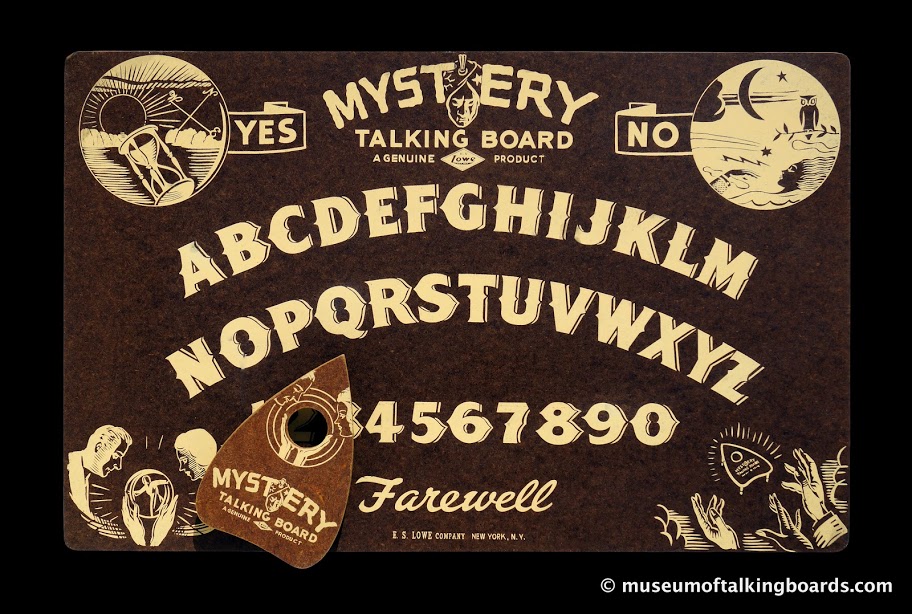
Mystery Talking board-E.S. Lowe, New York, NY c. 1940
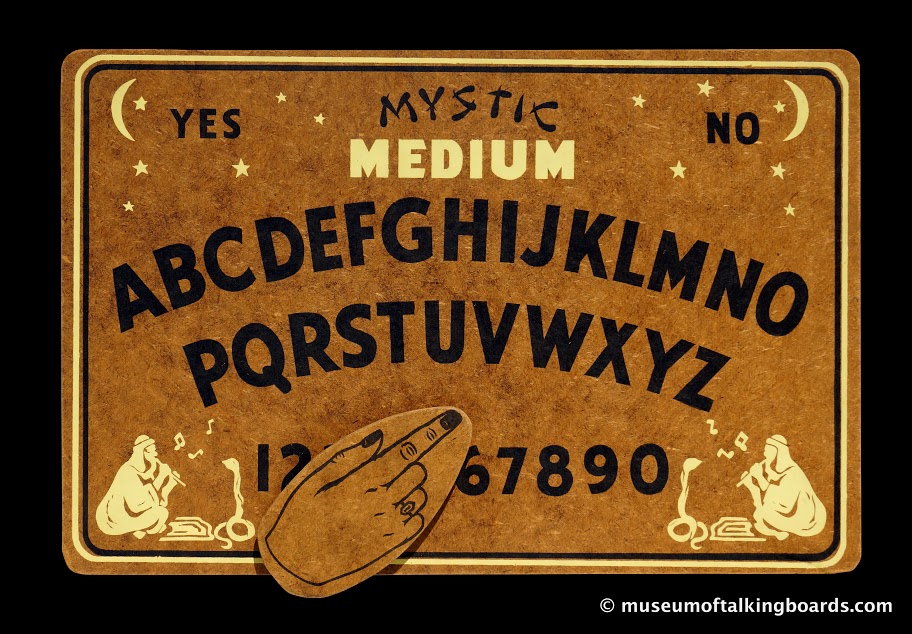
Mystic Medium (black yellow variant)-Medalie Manufacturing, Minneapolis, MN
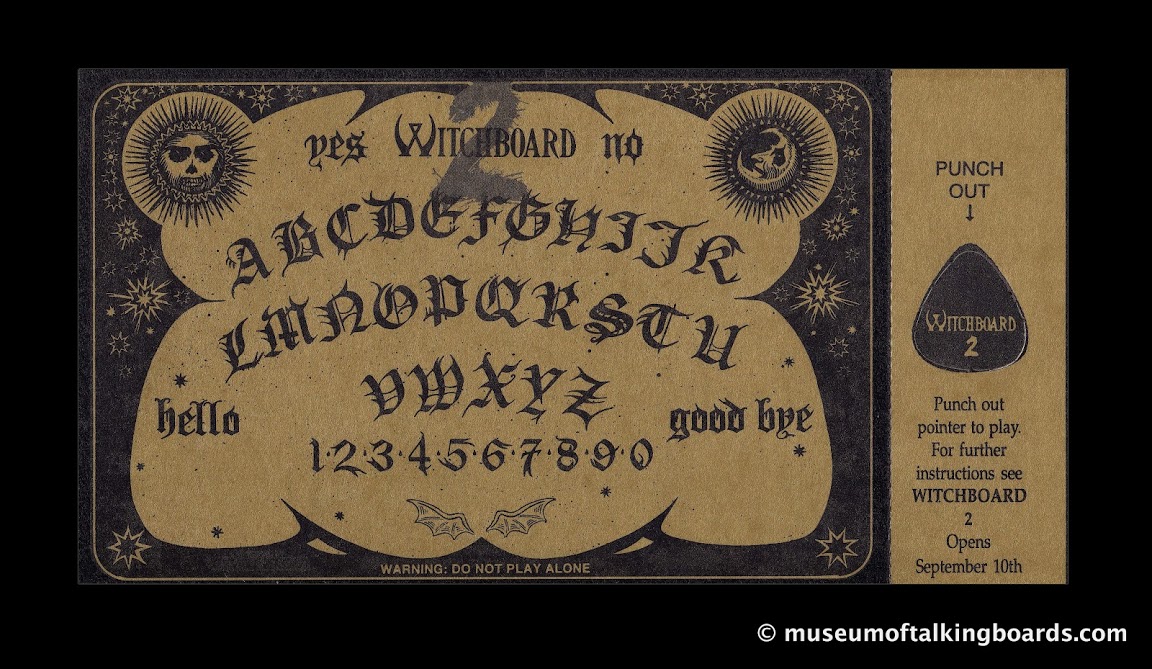
Witchboard 2 (Movie Promo)-Rep
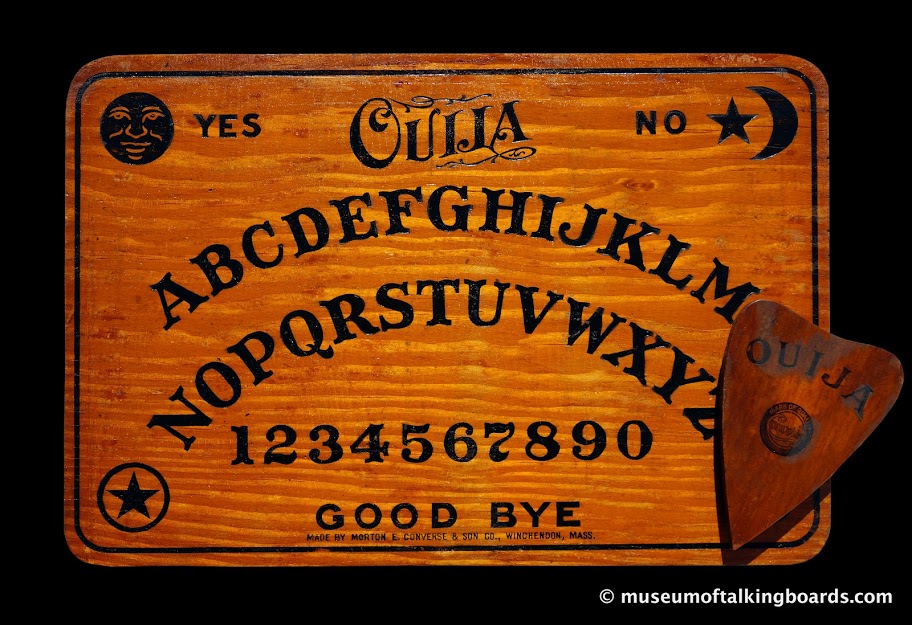
Ouija-Mort
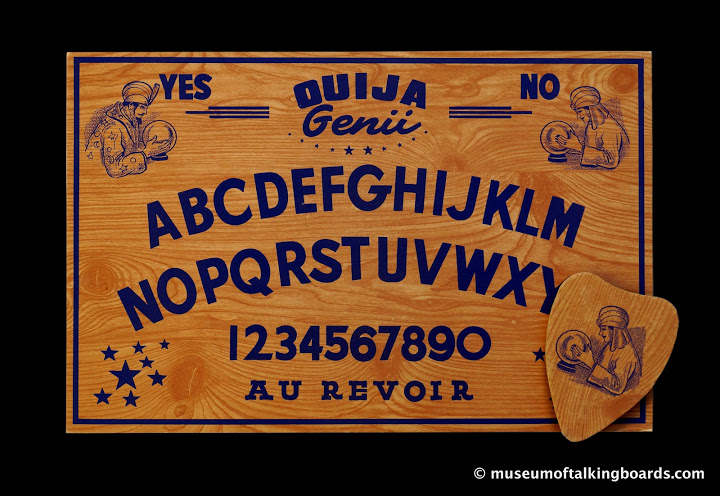
Ouija Genii-Bola
So we’re all caught up on the story, but I know what you really want to ask now. Is it real? As much as I like to believe it myself and hate to spoil the fun, apparently its not. Stuff You Should Know explains it all, blaming Idiomotion for the mysterious movement of the Ouija’s planchette. Idiomotion is essentially an involuntary motion, where thought precedes movement and subconsciously answers your own question. The trick is, you really don’t realise and have no sensation of moving it.
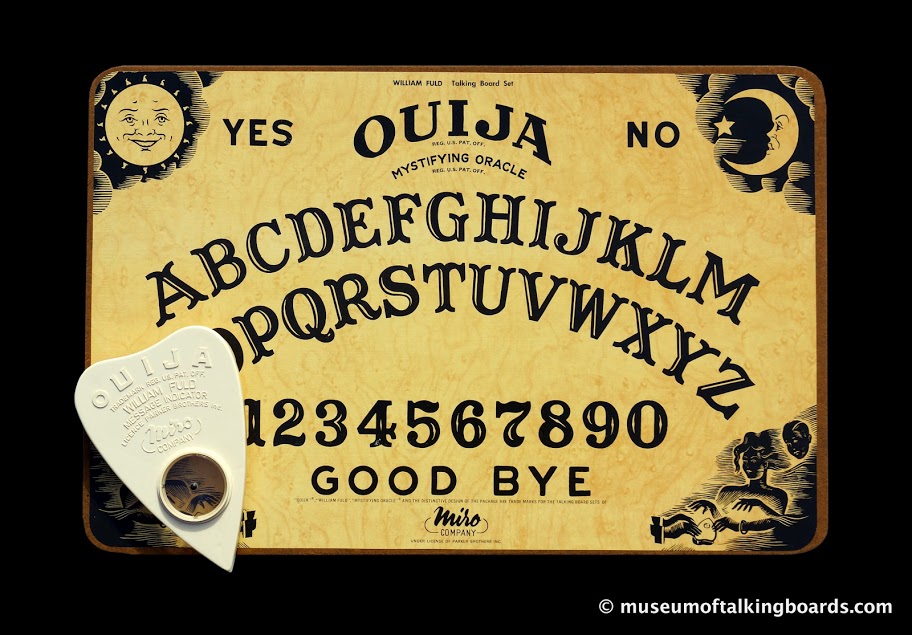
Ouija-Miro Company (license Parker Brothers), France c. 1966
So once again, science spoils the party. Still, I don’t know if science can make me forget The Exorcist. Even if you think it’s nonsense, don’t forget to close the portal to the great beyond, and say Goodbye.


